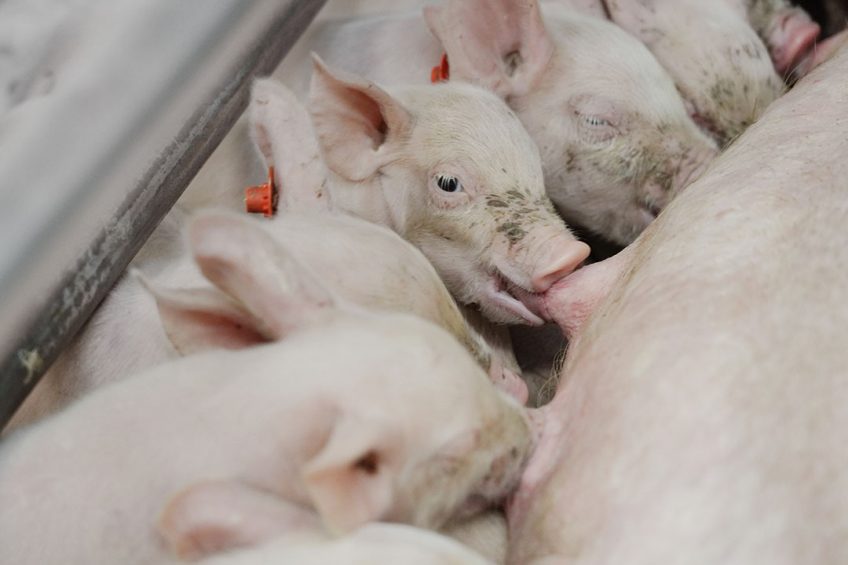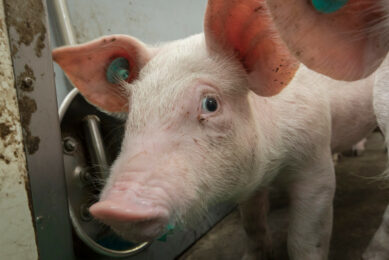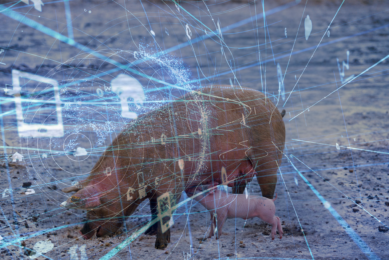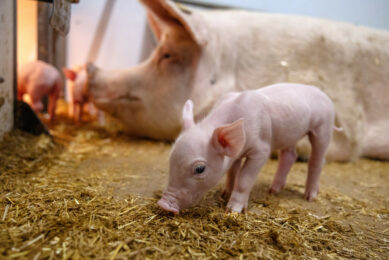Mycotoxin transmission from sows to piglets

Zearalenone and deoxynivalenol are better known as mycotoxins ZEN and DON. How do they – and their derivatives – transmit during gestation and lactation of sows? In a recent study, mycotoxin levels in colostrum and milk were measured, as well as in the serum of both sows and piglets.
The key reason for the studies performed at Schothorst Feed Research (SFR) in the Netherlands was to determine the risks of mycotoxins to animal health and performance under practical conditions. That means that we did not expose the animals to extremely high levels of mycotoxins, but to those close to EU regulatory limits.
Recently, in cooperation with Germany’s Federal Research Institute for Animal Health (FLI) in Brunswick, and French animal nutrition company Olmix, the Schothorst team evaluated the transmission of ZEN, DON and their derivatives during the last week of gestation and during lactation of sows, as measured in the colostrum and milk from sows, as well as in the serum from sows and piglets. The study was published in the open access journal Toxins. The main findings are summarised below.
Transmission into colostrum and milk
ZEN and DON are the mycotoxins most commonly found in feed, especially feed based on corn and beet pulp. It is well known that exposure to high concentrations of ZEN or DON results in their transmission into milk. Even if the EU guidance values of these mycotoxins are followed in the final diet, transmission into the colostrum and milk from sows and into their piglets may still occur.
ZEN and its derivatives, such as α-ZEL and β-ZEL, have a conformation similar to that of oestradiol, allowing them to bind oestrogenic receptors. Also, ZEN is rapidly metabolised by the gastrointestinal tract after ingestion, producing some metabolites that are even more toxic, such as the derivative just mentioned, α-ZEL. That shows the importance of measuring ZEN derivatives in milk and serum.
3 treatments
In the study, 2 different batches of beet pulp were used to prepare the diets, resulting in 1 diet containing 100 ppb ZEN and another with 300 ppb ZEN. When preparing diets with different feedstuffs, multi-mycotoxin contamination is hard to avoid.
Although the beet pulp used in the present study was not a source of DON, the combination of all the other feedstuffs used to prepare the feed resulted in a final diet containing about 250 ppb DON. That is much lower than the EU recommended level (900 ppb) and can be regarded as background contamination of pig feed. However, some impact on the intestinal integrity was hypothesised, particularly in combination with the intended ZEN dosing regimen. The trial consisted of 3 treatments:
- T1: LoZEN from day 109 of gestation until day 26 of lactation;
- T2: LoZEN from day 109 of gestation until farrowing and HiZEN from farrowing until day 26 of lactation;
- T3: HiZEN from day 109 of gestation until day 26 of lactation.
The mycotoxin levels in the experimental diets are shown in Table 1.
Increase of α-ZEL levels in milk
A significant increase in α-ZEL levels was observed in the colostrum of sows receiving T3, that is, those fed a HiZEN diet from day 109 until farrowing. When the milk was evaluated at weaning, increased α-ZEL levels were observed in sows fed the T2 and T3 diets, that is, those fed a HiZEN diet from farrowing to weaning or from day 109 to weaning, respectively (Table 2).
When the milk was evaluated at weaning, a significant increase in α-ZEL levels was observed in sows fed a HiZEN diet from farrowing to weaning, regardless of the ZEN level before farrowing. DON levels in colostrum and milk were similar among the groups, since the dietary levels of DON were the same for all sows.
Increase in mycotoxin serum levels
At the start of the trial, no differences were observed in the serum levels of mycotoxins. However, at the end of the trial, that is, day 26 of lactation, a significant increase was observed in the serum levels of ZEN, α-ZEL and β-ZEL of sows fed diets T2 and T3 when compared with the control (T1). Although there were no significant differences in the levels of ZEN in the serum taken from piglets, the serum levels of DON and de-epoxy-deoxynivalenol (de-DON) were significantly high in the piglets fed T3, together with a trend of increased α-ZEL level in the serum from piglets (Table 3).
As expected, dietary exposure to ZEN and DON at these levels did not affect the performance of sows and piglets. Furthermore, there was a decrease in backfat thickness combined with a decrease in serum leptin in sows exposed to 300 ppb ZEN during the last week of gestation. Backfat consists of water, collagen and lipid and is also a source of various hormones including leptin, which is positively correlated with backfat thickness.
Decreased serum levels of oestradiol
Serum levels of oestradiol were significantly decreased in piglets from sows fed HiZEN diet from day 109 of gestation or from farrowing up to weaning. In the past, we have shown that ZEN exposure during lactation would result in a depletion of the pool of gametes present in the ovaries of female piglets due to the oestradiol depletion caused by ZEN. Therefore, although production performance was not impaired, the exposed female piglets should not enter reproduction programmes.
There was a significant decrease in the serum GLP1 and an increase in calprotectin serum levels in piglets that were exposed during the last week of gestation and during lactation when compared to mycotoxin exposure during lactation only. Increased serum calprotectin levels indicate that inflammation was taking place. The decrease in the serum levels of the gut hormone GLP1, which also has an anti-inflammatory effect in the intestine, supports the hypothesis that piglets from the sows fed HiZEN and DON diets were experiencing inflammation.
Concluding: Transmission is possible
In conclusion, it is possible to determine ZEN, DON and their derivatives in the colostrum and milk from sows fed contaminated diets with mycotoxins at practical EU levels. Exposure to HiZEN resulted in a decrease in backfat thickness at farrowing, and this effect was correlated with a decrease in leptin serum levels in sows. Also, such an exposure resulted in a decrease in the serum oestradiol levels of sows and piglets.
Although the transmission of mycotoxins did not affect the performance of suckling piglets, an inflammatory process was taking place. More interestingly, there was an increase in DON and de-DON serum levels in suckling piglets exposed to the HiZEN diet during the last week of gestation and during lactation.
References available upon request.











